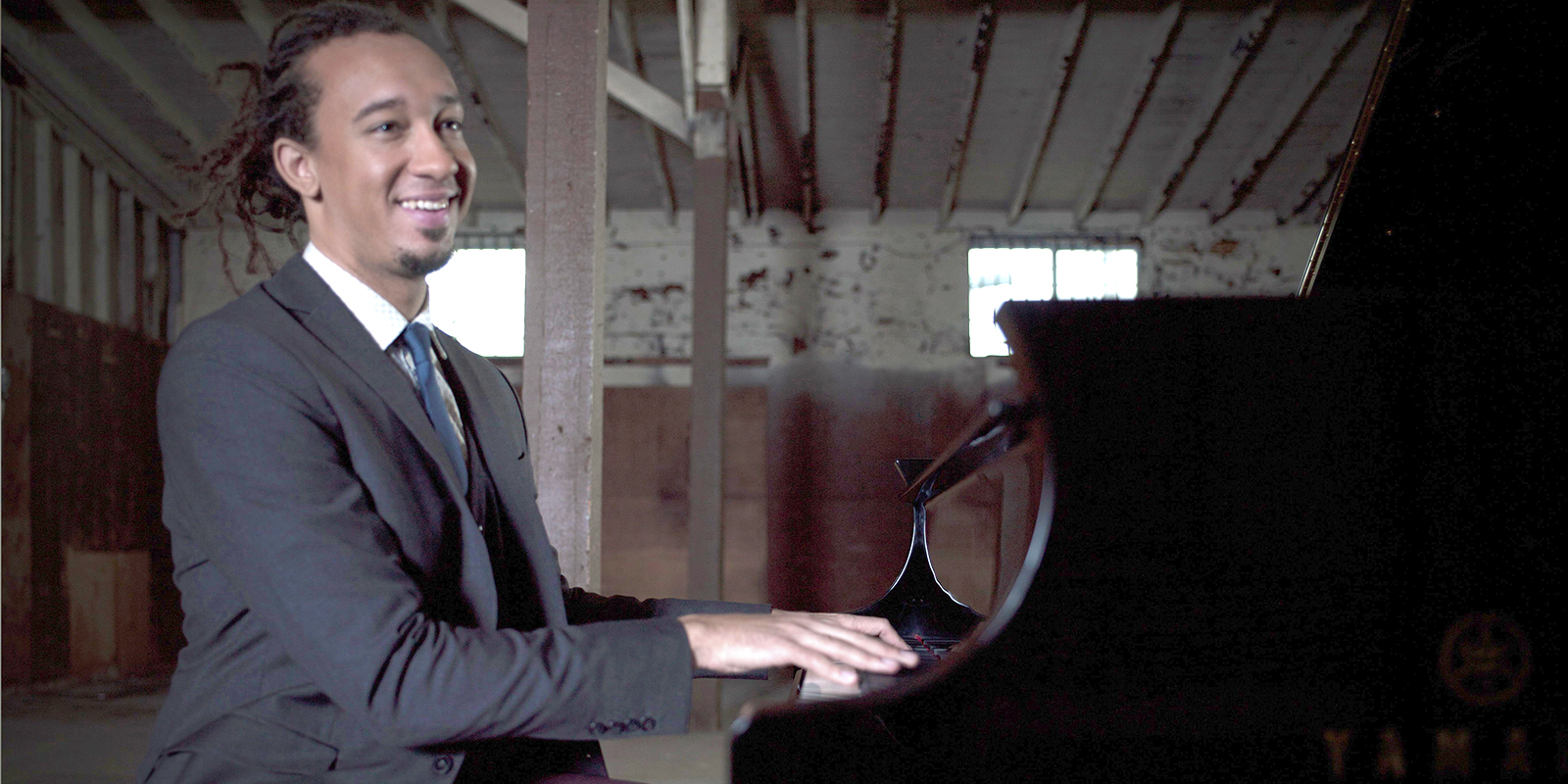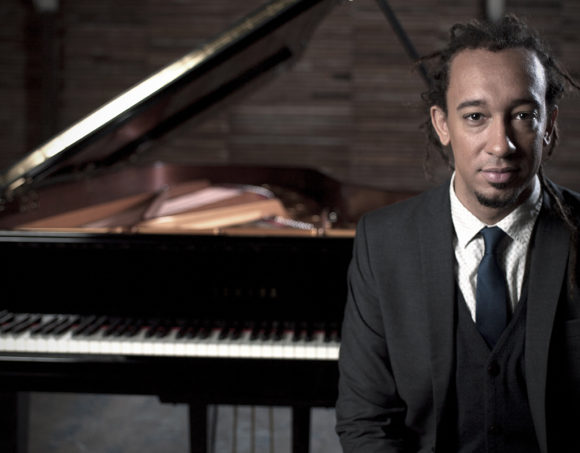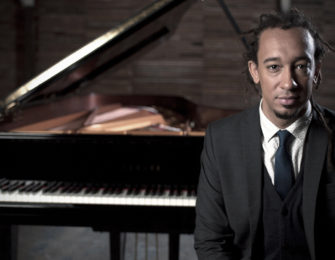Gerald Clayton is a four-time Grammy-nominated jazz pianist/composer and the 2017 Artist in Residence at the Monterey Jazz Festival.
He has performed and recorded with distinctive artists Diana Krall, Roy Hargrove, and Dianne Reeves. Clayton also has enjoyed an extended association since early 2013, touring and recording with saxophone legend Charles Lloyd.
2016 marked his second year as Musical Director of the Monterey Jazz Festival On Tour, a project that has featured his trio along with Ravi Coltrane, Nicholas Payton, Terence Blanchard and Raul Midón on guitar and vocals. Clayton’s discography as a leader reflects his evolution as an artist.
Clayton, a headlining act at the 60th annual Monterey Jazz Festival in 2017, performs at Casa Romantica for a special solo ‘jazz club’ performance. Casa Romantica interviewed him about his inspirations and recent experiences.
CR: How would you characterize your style of playing?
GC: For me, it’s about straddling a balance of tension + release. Aesthetically, I love beautiful melodies, and you could say I lean toward what some would consider ‘the inside’ – that is, I prefer to project a sound that my audience can resonate with rather than to play such avant-garde sounds that it’s too obscure. That said, I really enjoy improvising, so every time I play, it is a little different.
I encourage people to look at music holistically instead of just by a ‘type,’ because music is so often created from a variety of musical influences. You could say my own style is all music, in a nuanced way, and through my lens. My first love was Oscar Peterson, and from there I explored Herbie Hancock and Chick Corea, then my tastes kept opening up. My music is a product of all of my influences.
CR: What is more appealing: the vastness of a stadium stage, or the intimacy of a small venue?
GC: Playing in large and small venues demands different things of your performance. I direct my playing outward toward my audience, and in a stadium-style stage, it’s hard to reach and connect with so many people – although I enjoy the challenge and the massive energy. I do love playing intimate venues because everyone is near enough to experience, to really ‘get inside’ the softest sounds, and to feel the largest sounds. Also, I can see all of the humans that I’m projecting out to! I enjoy that connectedness.

CR: What are the highlights of your experience as Musical Director of the Monterey Jazz Festival on Tour these past two years?
GC: I was honored to get the call from Tim Jackson [the Director of the Monterey Jazz Festival]. The idea of the Monterey Jazz Festival on Tour is to be a mascot of the festival and its history – to play notable repertoire and pay homage to the great artists that have performed there, which is to say many great artists. The job was easy because, I mean, I got to play music from – and with – heroes of mine! I was honored to perform with an all-star cast and made some wonderful road memories.
CR: Tell us about your 2016-17 commission from Duke University, Piedmont Blues.
GC: It’s a specific and beautiful history that I learned about through this commission. I was essentially a student of the music for the two years that I worked on it – familiarizing myself with the music, culture, people, and landscape that informed the Piedmont Blues style, which had its heyday from the 1920s through 1940s.
Wikipedia has an article about the Piedmont Blues that characterizes the style as ‘guitar-based finger-picking.’ After studying with historian Glenn Hinson, I grew to realize that in fact it was more complex but much of it didn’t get recorded – and there are just less surviving recordings. The real Piedmont Blues manifested at juke joint parties, and at tobacco trading warehouses. The foreman there needed to stay with their crop all night to protect it, and they needed entertainment, so they would hire bands and the entertainment would go all night. Another influence on the style came out of tobacco de-stemming factories. It was mostly women, African American women, who worked there late into the night, and they would sing church hymns all night to pass the time. People would gather from all around to hear their voices.
Through the project, I understood more how there is a need for us to us as humans to release joys and sorrow, and by finding that release in the blues, it’s therapeutic c; it’s healing. The culmination of the commission, a performance of music, dance, and film, was my hand in find an interesting way to build the arc of joy, sorrow, and healing while paying tribute to this specific dialogue of a time and place.
CR: You’re a resident of New York City, but you grew up in L.A. The New York Times recently reviewed the burgeoning Los Angles jazz scene in its article “The Music Is Thriving, Though Support Is in Peril.” Having grown up here, what do you think needs to happen for jazz to receive the kind of support and recognition in southern California that it does on the Eastern seabord?
GC: You know, I think that the scene is really thriving and I don’t have a pessimistic view of jazz appreciation. What might make New York City different from a city like Los Angles is that New York City is essentially this tiny island, filled with creative people who are bouncing ideas and energy off each other in very close proximity. In Los Angeles, there’s more space and it’s a little harder to bring a group of creative people together like that.
There is a responsibility for people who love jazz to help one other explore the community, and I will say that when I listen to the radio in Los Angeles… I think they could open their minds and adjust their models to fit in more of the current jazz evolution. Jazz is such a broad term, and it means something different to everyone, so you can’t be lazy about learning.
CR: What excites you most about performing at Casa Romantica?
GC: I grew up in Los Angeles and often passed through San Clemente on my way to San Diego. I’ve always wanted to explore it. I’m looking forward to connecting with the community there, and seeing the beautiful Casa Romantica venue that I’ve seen in pictures. And being by some good surf spots! Finally, I love any chance to make music, and to play a solo piano concert. There’s an enjoyable challenge in playing alone, and I’m happy to have it with the Casa Romantica community.

 Blog
Blog  Casa Captivating
Casa Captivating  Exclusive Interviews
Exclusive Interviews  Captivated by… Gerald Clayton
Captivated by… Gerald Clayton
 Blog
Blog
 Captivated by… Gerald Clayton
Captivated by… Gerald Clayton


